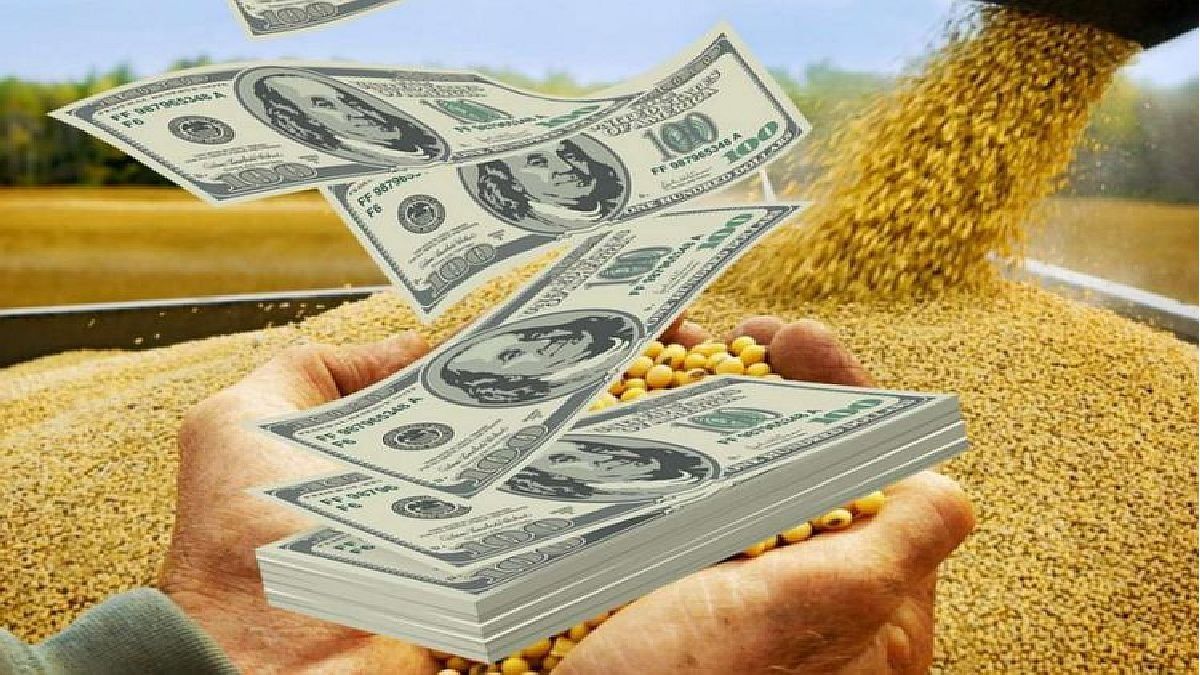The market predicted that this time the measure would be effective and that the producers would be satisfied with the size of the jump in prices (the perceived price became the highest since March 2020, 49%). This strong liquidation of the soybean complex (it is worth remembering that, if the producer has no incentive to sell, the exporter has nothing to liquidate) would result in high reserve purchases by the BCRA.
And so it ended up happening, indeed. The exporters turned massively to liquidate (which is behind soybean producers massively turned to sell), largely exceeding the expectation of the minister, who at a press conference had reported that US$1,000 million would be liquidated in the first 72 hours of implementation of the operation. The liquidation was in crescendo: US$320 million on Tuesday, US$465 million on Wednesday and US$623 million on Thursday, totaling US$1,408 million in the first three rounds and exceeding the minister’s forecasts by 41%.
dollars (6).jpg
Pexels.
This allowed the Central Bank to buy reserves for US$866 million in the exchange market between Tuesday and Thursday, considering that it had to supply the net demand of the rest of the “non-soybean” market for US$542 million (to which it sold dollars at an average of $140.90). In this way, net reserves quickly rebounded from an estimated US$1,000 million on Monday to one of US$1,860 million at the end of Thursday.
Sources from the agricultural sector estimate that next week’s liquidation could be much higher than last week’s, so a boom purchase of reserves even higher. Consequently, the reserve goal established by the IMF for the third quarter (the stock must reach US$6.4 billion), which until less than a week ago seemed unattainable, today seems to be within reach.
However, this benefit comes at a cost, which is reflected in a capital loss for the BCRA. The monetary authority will be losing approximately $60 for every dollar it manages to buy from soybean exporters. How does this translate to the balance sheet? An asset (the reserves) will be added that will be valued at $140 and Monetary Base (a liability) will be issued at a rate of $200 per dollar to buy those reserves. The difference, so that the net worth is not altered, will be covered by a Non-Transferable Letter in dollars that the Treasury will place with the BCRA (this letter will be integrated into the Assets of the BCRA, leaving a change in neutral net worth after the measure).
The truth is that if we take a “monetary” net worth (which discounts that the Non-Transferable Treasury Bills are papers with no value or with one much less than its face value of 100), the loss ends up happening anyway.
Below, as a guideline, is detailed what would happen if agriculture ends up liquidating during the rest of the month at the average rate of the first three rounds, and assuming that the BCRA buys reserves for the same proportion.
- Soy producers would settle a total of US$8,916 million in the month, well above the US$5,000 million announced by Massa;
- The Central Bank would buy US$5,485 million if it continues to sell the rest of the demand at $140 at this rate. The goal of Net Reserves of US$6,400 million at the end of September would be reached, considering that the stock closed on Thursday at US$1,860 million;
- The net monetary issue would be $1.29 trillion or 1.6% of GDP;
- The most important: the loss of assets would amount to almost $500,000 millionequivalent to 0.62% of GDP or US$3,470 million (the “monetary” equity of the BCRA, which is negative, would go from -US$80,500 million to -US$84,000 million).
This balance sheet loss, which can also be thought of as unbacked money issuance, puts white on black on how expensive it would be for the BCRA to sustain this scheme beyond September 30.
And in the same way: what would be the incentive for soybean producers to settle again at $140? Or, failing that, if the scheme is extended, how long would the government withstand the pressure from the rest of the exporting sectors to be granted a similar exchange rate?
Clearly, at that point, the cost of equity would become relevant. In other words, can not continue to broadcast without support ad infinitum. Otherwise, its effects will be felt on inflation and the pressure will return to financial dollars.
However, the BCRA, for now, only prioritizes the very short term (whatever happens in September). In this regard, on Thursday he took out a circular that seeks to accelerate, even more, the liquidation of soybeans. A minimum rate was established at which soybean producers who maintain a stock greater than 5% of their production can be financed at 120% of the monetary policy rate.
In other words, the BCRA wants producers to liquidate almost all of their production. Otherwise, they must be financed at a TNA of 83.4%. This rate is set above crawl peg of the first days of September, which has been averaging a 81.9% NERand nullifies the possibility for producers to finance themselves at much lower rates (for example, that of Advances in Current Account is around 66% of TNA).
Although this rate adjustment sui generis for a specific sector seeks to avoid stocking of those producers undecided to liquidate, does not alter the incentive to accumulate tradables for the rest of the exporters and importers. Extended this practice, many of the reserves that are bought for the dollar “soy” could begin to go through other doors (call it imports or tourism), at the same time that the rest of the exporters (who continue to sell at $140) will not be tempted to liquidate.
Clearly, the BCRA is focused on overflowing with reserves during September. The problems of time consistency and rates seem to be left aside to be addressed later. Additionally, the “soybean” dollar has already left two somewhat obvious lessons.
If the exchange rate rises, the BCRA can buy reserves. The $205,239 million used to buy the US$866 million between Tuesday and Thursday are equivalent to an average purchase exchange rate of $237 (69.3% higher than $140). In second place, the IMF is somewhat generous in measuring only what happens to the left side of the balance sheet (the Reserves, which make up the Assets), without observing what happens with the Liabilities (the Monetary Base and the Remunerated Debt of the BCRA).
PPI Macroeconomics Team Leader
Source: Ambito




